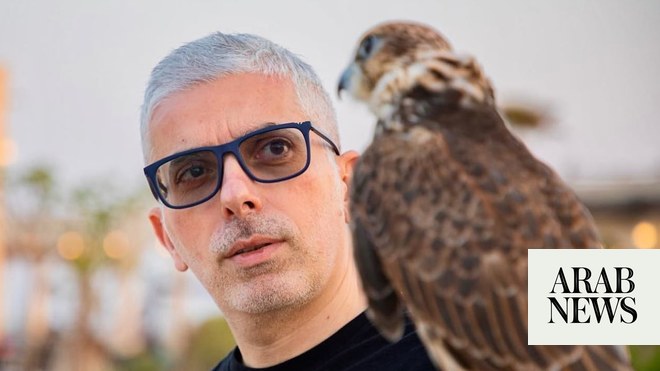
The art world is in constant flux, each year bringing more surprises than the last, and artists take advantage of this creative onslaught to generate more innovation and change. Slightly confusing? Maybe. Intriguing? A definite yes.
The Abraaj Group Art Prize is celebrating its 10th edition in Art Dubai and has announced Lebanese artist Lawrence Abu Hamdan as the winner of this year’s competition.
Abu Hamdan’s vast works are politically focused, incorporating sounds in an interplay of noise and silence in conflict.
He unveiled his award winning work on the 21st of March, on the official opening of Art Dubai. “Walled Unwalled”, a single channel film projected on a glass wall covered in a special holographic foil that allows it to be reactive to light - dark elements of the image retain the glass walls natural transparency while the bright patches allow it to appear solid. The performance comprises of an interlinking series of narratives derived from legal cases that revolved around evidence that was heard or experienced through walls.
The Berlin-based artist has had marvelous successes over the years in using his knowledge and research in sound and surveillance technologies to produce works of art that translate well to a wide audience. His work is like nothing I have encountered before; it is moving, disturbing and raw.
A trained musician, fluent in the anatomy of audio production, Abu Hamdan is able to understand the causes of different types of distortion and noise, qualifying him to work on forensic audio investigations. His work and research mainly revolve around the manners of use and abuse of various kinds of audio.
He has compiled audio analyzes for legal investigations at the UK asylum tribunal, and advocacy for organizations such as Amnesty International and Defense for Children International. Forensic audio investigations are conducted as part of his research at Goldsmiths College at the University of London, where Abu Hamdan is a PhD candidate.
“It’s my formal training as an artist that has augmented this non-expert but proficient training in musical production,” said Abu Hamdan. “Think of Michelangelo Antonioni’s 1966 film ‘Blow-Up,’ or more aptly in this context, Brian De Palma’s 1981 thriller ‘Blow Out.’ In both, we see an artist (a photographer in ‘Blow-Up’ and a B-movie effects artist in ‘Blow Out’) become a murder investigator.
“The intensity with which these artist-protagonists see and hear the world in order to reproduce it — each paying very close attention to every grain of an image or every aspect of an audio track — is so great that both artists unintentionally find themselves in the position of being a forensic investigator.”
Abu Hamdan’s use of audiovisual installations expresses different themes, all of which revolve around the importance of bringing forth the truth. There is no room for lies or deceit, and we all know that science does not lie.












